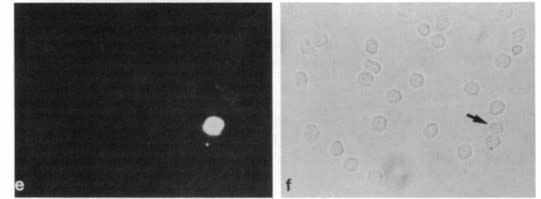
Cat. #161125
GATA3-eGFP reporter cell line
Cat. #: 161125
Unit size: 1x10^6 cells / vial
Organism: Mouse
Tissue: Embryonic
Disease: Development
Model: Transgeneic
£575.00
This fee is applicable only for non-profit organisations. If you are a for-profit organisation or a researcher working on commercially-sponsored academic research, you will need to contact our licensing team for a commercial use license.
Contributor
Inventor: Matthew C Holley
Institute: University of Sheffield
Tool Details
*FOR RESEARCH USE ONLY
- Name: GATA3-eGFP reporter cell line
- Alternate name: US/VOT- GATA3eGFP; Univ Sheffield/Ventral Otocyst gata3-enhanced green fluorescent protein; GATA3eGFP; VOT- GATA3eGFP; GATA3eGFP reporter cell line
- Organism: Mouse
- Tissue: Embryonic
- Disease: Development
- Morphology: Inner ear otocyst at embryonic day E10
- Model: Transgeneic
- Model description: The mice were derived from a cross between two different transgenic mouse lines. One mouse line stably expressed the H-2Kb-tsA58 transgene in which a temperature-sensitive variant of the SV40 large T-antigen was expressed under the control of an inducible promoter driven by gamma-interferon. The second, GATA3eGFP BAC-transgenic mouse line expressed eGFP under the control of the GATA3 promoter.
- Crispr: No
- Conditional: Yes
- Conditional description: Conditionally immortal, see production details
- Description: This cell line is the only GATA3 reporter line capable of efficiently screening extrinsic factors influencing GATA3 expression in high-throughput systems. The GATA3-eGFP reporter cell line expresses GATA3-eGFP via an enhancer that is expressed in a pattern very closely resembling that of native GATA3 during mouse embryonic development. Fusion of GATA3 enhancer to eGFP is a key feature of this cell line allowing high-throughput screening of drugs that modulate the expression level of gata...
- Application: High-throughput screening (HTS) of drugs modulating gata3 expression level; Gata3 regulation studies
- Production details: Animal studies were licensed under the UK Home Office, Animals (Scientific Procedures) Act 1986, and had prior approval of The University of Sheffield Ethical Review Committee. Tissue was harvested from animals culled by a Schedule 1 method. GATA3eGFP mice were a kind gift of Dr Stavros Malos from the Cyprus Institute of Neurology and Genetics and were generated by Bacterial Artificial Chromosome (BAC) recombination [Panayi et al., 2010]. For characterization of embryos, homozygous GATA3...
- Biosafety level: 1
- Additional notes: The expression of eGFP correlates with that of endogenous gata3 in V2c interneurons within the spinal cord from embryonic days E10.5-11.5 [Panayi et al., 2010]. It was found that in freshly dissected or unfixed, cryosectioned tissue it correlated with endogenous expression of gata3 in many other tissues throughout embryonic development. At E10.5 these included the midline dorsal aorta, mesonephric ridge, endothelial cells around the region of the neural lumen, the lens of the eye and specific neurons of the central nervous system. At E12.5 they included the vomeronasal organ and neurons in the mesencephalon, pons and the diencephalon. Images of the whole head clearly revealed expression in the olfactory region, lens, midbrain, hindbrain and spinal cord. A similar pattern was observed at E14.5, including ventral spinal cord, trigeminal ganglion, thyroid glands and tongue. At E16.5, eGFP was observed in the diencephalon, pons, spinal cord, lens, tongue, thymus, carotid arteries, olfactory region and whisker follicles.
Target Details
- Target: GATA3 (GATA Binding Protein 3)
- Target background: Zinc finger transcription factor
Applications
- Application: High-throughput screening (HTS) of drugs modulating gata3 expression level; Gata3 regulation studies
- Application notes: Gata3 regulation studies in cancer (Breast, Pancreatic, Blood and others), development, immune system, deafness and in the adult function of central and peripheral nervous systems and organs including the kidneys, hair follicles and visual system
Handling
- Format: Frozen
- Volume: 1 ml
- Growth medium: Cell culture depends on the experiment and these cells can be cultured under different conditions [eg Milo et al. 2009; Lawoko et al. 2004; Rivolta & Holley, 2002; Lawlor et al., 1999]. Under immortalising conditions they will continue to proliferate so the temperature and level of g-interferon should be managed for optimal growth. The cells can be cultured both in serum and serum free conditions. In serum they can be cultured in MEM (Invitrogen-GIBCO, Paisley, UK) and 10% fetal bov...
- Unit size: 1x10^6 cells / vial
- Shipping conditions: Dry ice
- Storage conditions: Liquid Nitrogen
- Mycoplasma free: Yes
Related Tools
- Related tools: US/VOT-E36 Cell Line; US/VOT-N33 Cell Line; GATA3eGFP reporter cell line; UB-UE1 Cell Line; UB-OC2 Cell LineUB-OC1 Cell Line
References
- Panayi et.al. 2010. J Neurosci. 30(37):12274-80. PMID: 20844123
- Milo et.al. 2009. PLoS One. 4(9):e7144. PMID: 19774072
- Kurek et. al. 2007. Development. 134(2):261-72. PMID: 17151017
- Lawoko-Kerali et. al. 2004. Dev Dyn. 231(4):801-14. PMID: 15499550
- Lawoko-Kerali et. al. 2002. J Comp Neurol. 442(4):378-91. PMID: 11793341
- Patient and McGhee 2002. Curr Opin Genet Dev. 12(4):416-22. PMID: 12100886
- Rivolta and Holley 2002. J Neurobiol. 53(2):306-18. PMID: 12382283
- Karis et.al. 2001. J...



